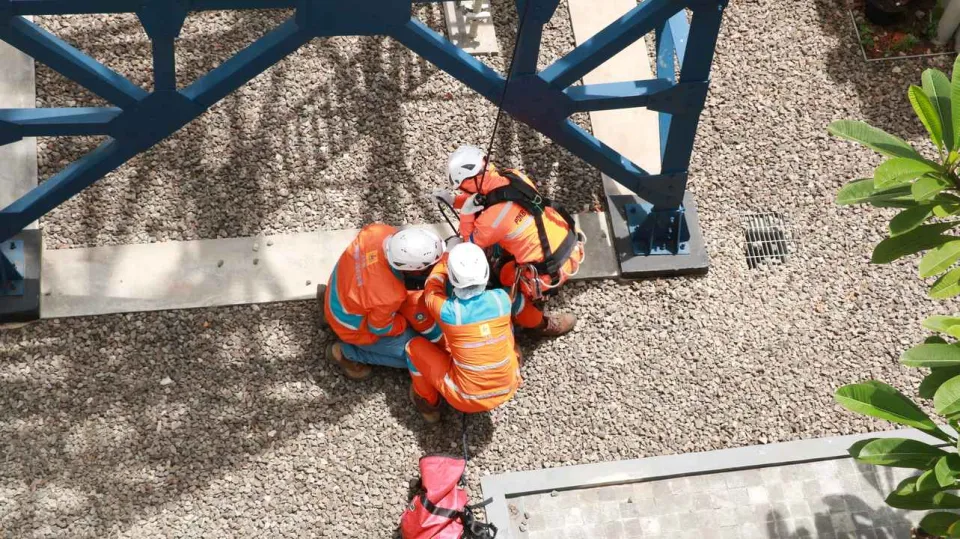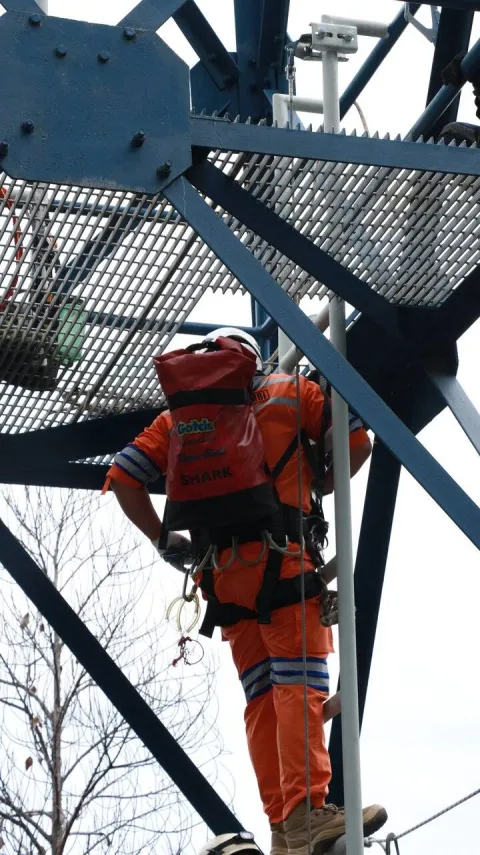Understanding Basic Occupational Safety and Health (K3) Techniques When Working at Heights
Working at heights is a common activity in various fields, from building construction to electrical network maintenance. However, this activity also carries significant risks for workers if not done correctly.
Therefore, it is important for every worker who will be working at heights to understand and apply basic occupational safety and health (K3) techniques. Here are some basic K3 techniques that need to be considered when working at heights:
Understanding Risks
Before starting work at heights, it is crucial for every worker to understand the potential risks. The main risks include falling from heights, falling objects or tools, and the danger of being struck by objects from above. Understanding these risks will help workers be more vigilant and take appropriate preventive measures.
Safety Equipment
Safety equipment is one of the most important aspects of ensuring safety when working at heights. Commonly used safety equipment includes full body harnesses, fall arrest lanyards, safety lines, helmets, and more. Ensure that the equipment is in good condition and meets standards before use. Additionally, workers should be trained to use the equipment correctly.
Routine Inspections
Before starting work at heights, it is important to conduct routine inspections of the equipment and work area. Ensure all safety equipment is in good condition and there are no damages that could threaten worker safety. Additionally, make sure the work area is free from obstacles and other potential hazards that could cause accidents.
Effective Communication
Effective communication is a key aspect of maintaining safety when working at heights. Workers need to communicate clearly and accurately about work plans, safety procedures, and work area conditions. Ensure every team member understands their roles and responsibilities and can support each other to maintain safety during work.
Use of Personal Protective Equipment (PPE)
Besides using standard PPE such as safety boots, gloves, and protective glasses, ensure workers also use fall protection PPE (APD-PJ). Examples of APD-PJ include full body harnesses, fall arrest lanyards, and safety lines. Ensure workers use PPE correctly and according to the type of work being performed.
Training and Certification
To increase awareness of occupational safety and health at heights, it is important for workers to undergo training and obtain the appropriate certification. This training will provide the basic knowledge and skills needed to work safely at heights. Additionally, certification is proof of competence that can boost workers' confidence in performing their tasks.
Evaluation and Improvement
Finally, after completing work at heights, it is important to evaluate the occupational safety and health practices that were implemented. Identify potential risks and find solutions to address any issues that arise. Make periodic improvements and updates to safety procedures to ensure they are in line with technological advancements.
By understanding and applying basic occupational safety and health (K3) techniques when working at heights, workers can reduce the risk of accidents and injuries. Occupational safety and health should always be the top priority for every individual and company to create a safe and healthy work environment for all.
For further consultation about SpanSet Indonesia products and services, please contact us via email at [email protected] or WhatsApp
To find specification detail and prices of SpanSet Indonesia Products, please visit SpanSet Indonesia Marketplace on Tokopedia and Shopee.

